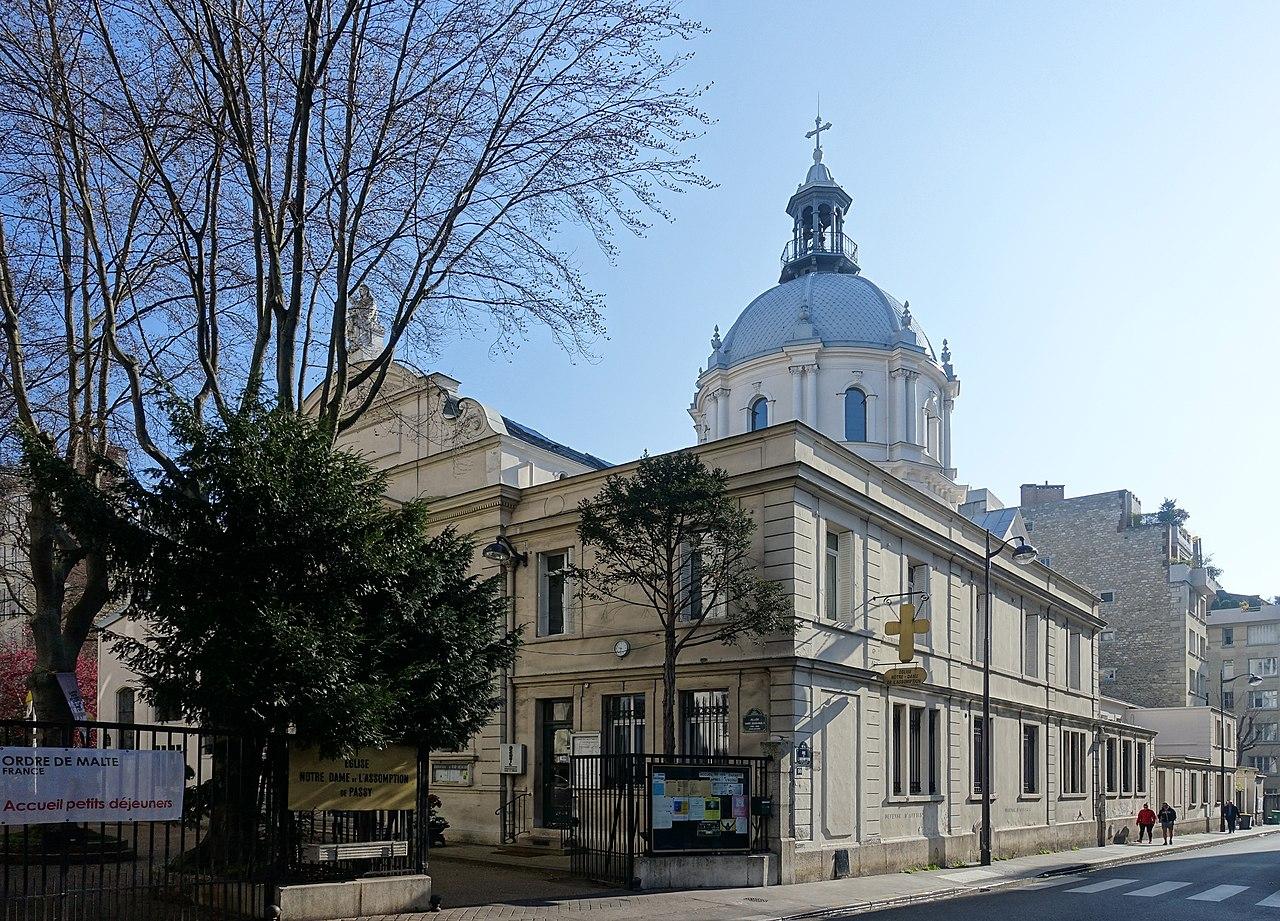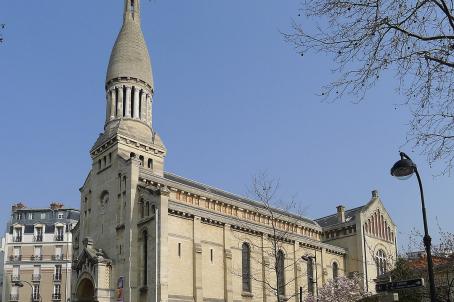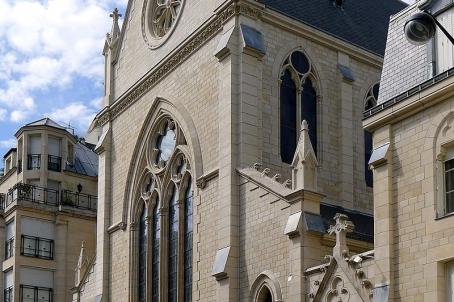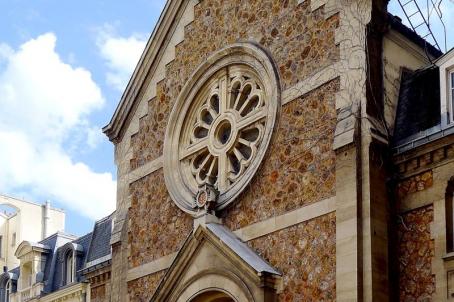Église Notre-Dame-de-l'Assomption

Notre-Dame-de-l'Assomption de Passy was built by the Pères de la Miséricorde, a missionary order for the rechristianisation of cities, at the end of the 19th century. Following the law of 1901, the Fathers were expelled and the church was closed until 1907 when it was reopened as an annexe chapel of the church of Notre-Dame-de-Grâce-de-Passy. In 1914, the church became a parish church and in 1928, the church took the name of Notre-Dame-de-l'Assomption.





